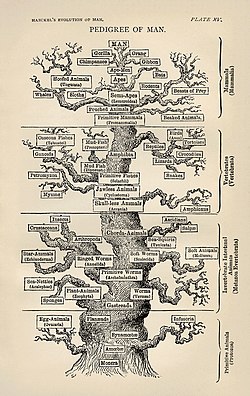Resource (biology)
 From Wikipedia - Reading time: 6 min
From Wikipedia - Reading time: 6 min
In biology and ecology, a resource is a substance or object in the environment required by an organism for normal growth, maintenance, and reproduction. Resources can be consumed by one organism and, as a result, become unavailable to another organism.[1][2][3] For plants key resources are light, nutrients, water, and space to grow. For animals key resources are food, water, and territory.
Key resources for plants
[edit]Terrestrial plants require particular resources for photosynthesis and to complete their life cycle of germination, growth, reproduction, and dispersal:[4][5]
Key resources for animals
[edit]Animals require particular resources for metabolism and to complete their life cycle of gestation, birth, growth, and reproduction:[6]
Resources and ecological processes
[edit]Resource availability plays a central role in ecological processes:
See also
[edit]- Abiotic component
- Biotic component
- Community ecology
- Ecology
- Population ecology
- Plant ecology
- size-asymmetric competition
References
[edit]- ^ Miller, G.; Spoolman, Scott (2012). Living in the Environment Principles, Connections, and Solutions. Brooks/Cole. ISBN 978-0-538-73534-6.
- ^ Ricklefs, R.E. 2005. The Economy of Nature, 6th edition. WH Freeman, USA.
- ^ Chapin, F.S. III, H.A. Mooney, M.C. Chapin, and P. Matson. 2011. Principles of terrestrial ecosystem ecology. Springer, New York.
- ^ Barbour, M.G. J.H. Burk, W.D. Pitts and F.S. Gilliam. 1998. Terrestrial Plant Ecology, 3rd ed. Benjamin Cummings, San Francisco, CA.
- ^ Craine, J.M. 2009. Resource strategies in wild plants. Princeton University Press, Princeton.
- ^ Smith, T.M., and R.L. Smith. 2008. Elements of ecology, 7th ed. Benjamin Cummings, San Francisco, CA.
 KSF
KSF